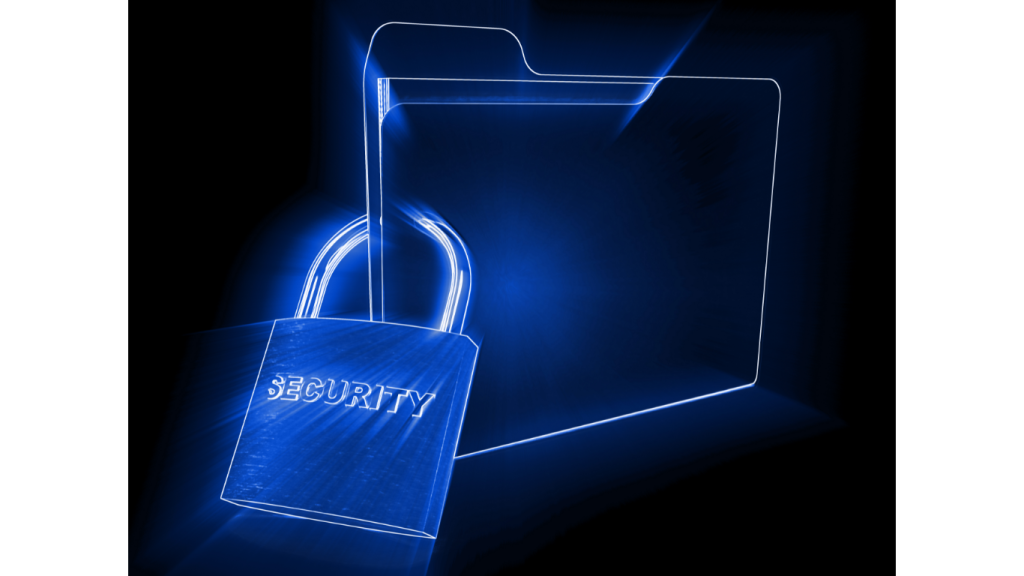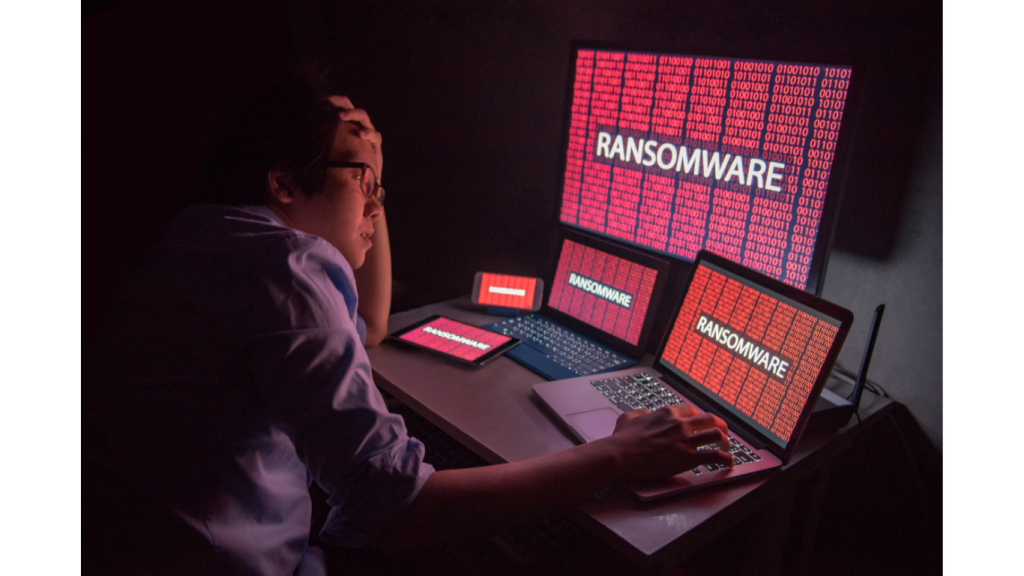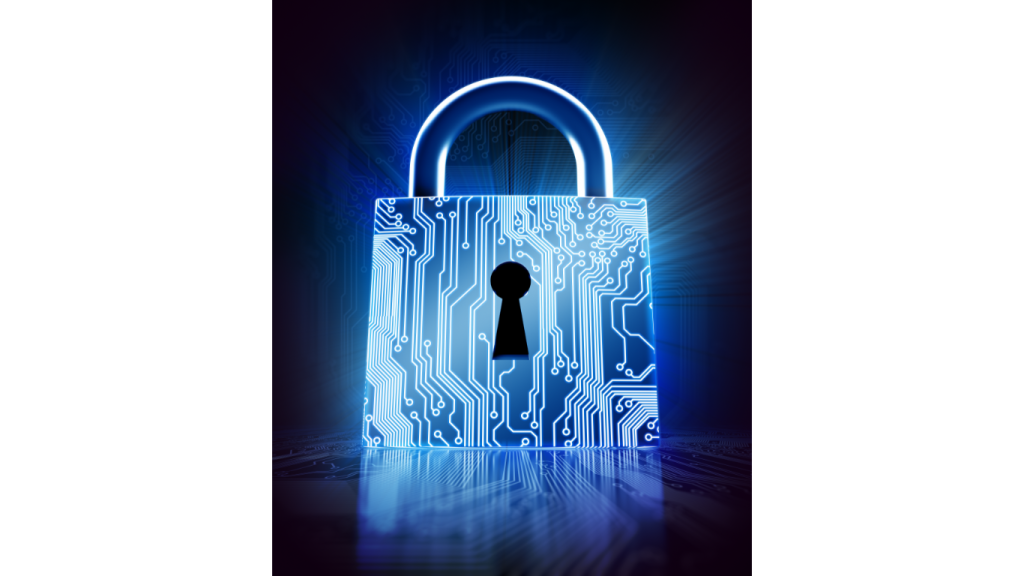Ransomware has become one of the most prevalent and damaging cyber threats targeting businesses of all sizes. For small and medium-sized businesses (SMBs), the consequences can be devastating—not only due to the potential financial impact but also the reputational damage and loss of customer trust that often accompany such attacks.
It is important to not only understand what ransomware is, but how it occurs and what you can do to protect yourself and your business. Many SMBs remain underprepared, believing that cybercriminals primarily target large organizations. This misconception has led to a surge in ransomware incidents affecting smaller businesses, which often lack the resources and robust defenses that larger enterprises typically have.
What Is Ransomware?
Ransomware is a type of malicious software (malware) designed to encrypt a victim’s files or lock them out of their systems until a ransom is paid, typically in cryptocurrency like Bitcoin. The attackers demand a payment in exchange for providing a decryption key or restoring access. If the victim refuses to pay, their data may remain permanently inaccessible, or worse, be leaked publicly.

These attacks don’t just target large corporations. Small to medium-sized businesses, schools, and even charities are frequent targets because attackers assume they’re less protected.
The costs can be staggering, not just in ransom payments but also in downtime, data loss, and reputational damage.
How Does Ransomware Work?
Ransomware attacks often begin with a single weak link. This could be a phishing email, a vulnerable system, or even an employee unknowingly clicking a malicious link. Once inside, the malware spreads, encrypting files and locking you out of critical systems.
Ransomware attacks typically unfold in several stages, which we will highlight below
Infection
The attacker gains initial access to the system through vectors such as phishing emails, malicious links, software vulnerabilities, or unsecured remote desktop protocols (RDP). Phishing is the most common delivery method, where attackers trick users into clicking on malicious attachments or links that download the ransomware payload.
Execution
Once the ransomware has been downloaded, it begins executing its malicious code. This often involves gaining administrative privileges and disabling security features like antivirus programs.
Encryption
The ransomware starts encrypting the victim’s files, rendering them inaccessible. Different ransomware variants use different encryption techniques, but the outcome is the same—critical files and databases become unusable without a decryption key.
Ransom Demand
A ransom note is displayed, typically informing the victim of the attack and demanding a specific sum in cryptocurrency in exchange for a decryption key. The note often includes a deadline, threatening to increase the ransom or delete the data if the payment is not made.
Payment or Data Loss
If the victim decides to pay, there’s no guarantee that the attackers will provide a working decryption key. In some cases, even after paying, the attackers may demand more money or refuse to unlock the files.
Why Are Small Businesses Prime Targets?
Contrary to popular belief, cybercriminals don’t only target large corporations. In fact, small and medium-sized businesses are more attractive targets for several reasons:
- Weaker Security Posture: Many SMBs lack the advanced security tools and protocols that larger organizations have, making them easier to penetrate.
- Perceived Willingness to Pay: Smaller companies are more likely to pay a ransom to quickly recover their data and resume operations, as the financial impact of downtime can be crippling.
- Lack of Resources: SMBs often don’t have dedicated cybersecurity personnel or incident response teams, leaving them ill-equipped to detect and respond to ransomware attacks.
- Supply Chain Attacks: Attackers often target smaller businesses as a stepping stone to breach larger partners or clients, exploiting the interconnected nature of modern business ecosystems.
The Impact of Ransomware on SMBs
For small and medium-sized businesses (SMBs), the impact of a ransomware attack can be devastating. Unlike large corporations with extensive resources and dedicated cybersecurity teams, SMBs often operate with limited budgets and smaller IT departments. This makes them particularly vulnerable to the disruptive effects of an attack.

Financial Loss
The financial repercussions of a ransomware attack extend far beyond the ransom payment itself. Downtime can halt operations for days, weeks, or even longer. During this time, businesses lose revenue while continuing to incur fixed costs like salaries and rent.
Additionally, recovering from an attack often involves significant expenses, including hiring cybersecurity experts, replacing infected systems, and restoring data from backups (if they exist). For many SMBs, these costs can be crippling.
Damage to Reputation
Ransomware attacks can erode trust with customers, partners, and stakeholders. If sensitive data is compromised or leaked, clients may question the business’s ability to protect their information. This can lead to customer churn, difficulty in acquiring new clients, and long-term reputational damage.
For SMBs that rely on trust and strong relationships—such as local businesses, charities, and niche service providers—this loss of confidence can be especially harmful.
Legal and Regulatory Consequences
If a ransomware attack results in a data breach, businesses may face legal and regulatory consequences. Laws such as the UK’s Data Protection Act 2018 and the General Data Protection Regulation (GDPR) impose strict requirements on how businesses handle personal data.
Failing to comply with these regulations due to an attack could lead to fines, lawsuits, and audits, adding another layer of financial and operational strain.
Operational Disruption
One of the most immediate effects of ransomware is the disruption it causes. SMBs often rely on continuous access to systems and data to serve customers, process payments, and maintain workflows. A ransomware attack can bring these operations to a standstill.
For example, an e-commerce business might be unable to process orders, or a healthcare provider might lose access to patient records, jeopardizing care. These interruptions not only affect revenue but also damage customer relationships.
Psychological Toll
Beyond financial and operational consequences, ransomware attacks can take a significant toll on business owners and employees. The stress of navigating an attack, coupled with the uncertainty of recovery, can lead to burnout and decreased morale. For SMB owners, who are often deeply invested in their businesses, the impact can feel personal.
How to Protect Your Business from Ransomware
While ransomware is a serious threat, there are several proactive measures that SMBs can take to defend against it. Implementing these steps can significantly reduce the risk of falling victim to a ransomware attack.

Employee Awareness and Training
Since phishing is the primary delivery method for ransomware, educating employees is critical. Here at Cerberex, we provide high-quality awareness training for companies to make sure they are one step ahead, feel free to contact us for more info.
Regular training should focus on:
- Recognizing Suspicious Emails: Train staff to identify phishing emails, suspicious links, and unusual attachments.
- Safe Browsing Practices: Encourage employees to avoid clicking on ads or visiting untrusted websites.
- Incident Reporting: Establish a clear process for employees to report suspected phishing attempts or unusual system behavior.
Implement Robust Backup Solutions
Regular backups are one of the most effective defenses against ransomware. Ensure that:
- Data is Backed Up Frequently: Schedule regular backups to ensure minimal data loss in case of an attack.
- Backups are Stored Offline: Keep backups in a separate, offline location to prevent them from being encrypted in the event of a ransomware infection.
- Backups are Tested Regularly: Perform routine tests to ensure data can be restored quickly and effectively.
Use Multi-Factor Authentication (MFA)
Implement MFA wherever possible to add an extra layer of security. This makes it harder for attackers to gain unauthorized access, even if credentials are compromised.
Secure Remote Access
Remote Desktop Protocol (RDP) is a common entry point for ransomware. Protect remote access by:
- Using Strong Passwords and MFA for Remote Accounts
- Limiting RDP Access to Authorized Users Only
- Enabling Account Lockout Policies: Lock accounts after multiple failed login attempts to prevent brute-force attacks.
Keep Software and Systems Updated
Ensure that operating systems, applications, and software are always up to date. Regular patching helps close security vulnerabilities that attackers can exploit to gain access.
Deploy Anti-Ransomware Solutions
Consider using advanced anti-ransomware tools that can detect and block malicious behavior patterns. Some solutions use behavioral analysis to identify ransomware activity before files are encrypted.
Implement Network Segmentation
Segmenting your network can prevent ransomware from spreading to critical systems and data. Divide the network into smaller, isolated sections to contain any infection.
Create an Incident Response Plan
An incident response plan outlines what steps to take in the event of a ransomware attack. It should include:
- Roles and Responsibilities: Define who is responsible for each aspect of the response.
- Communication Protocols: Establish internal and external communication plans.
- Containment and Recovery Steps: Outline procedures for containing the threat and restoring operations.
What to Do If You’re Hit by Ransomware
A ransomware attack can feel overwhelming, but how you respond in the first few hours and days is critical to minimizing damage and recovering your operations. Here’s a step-by-step guide to help you navigate the situation effectively.
1. Stay Calm and Isolate the Threat
The first step is to remain calm and act swiftly. Disconnect affected devices from your network to prevent the ransomware from spreading further. This includes unplugging Ethernet cables, disabling Wi-Fi, and shutting down servers if necessary.
If possible, identify the origin of the attack, such as an infected email or a compromised system, and isolate it to limit the damage.
2. Do Not Pay the Ransom
While it may be tempting to pay the ransom to quickly regain access to your data, this is generally not recommended. Paying doesn’t guarantee the attackers will provide the decryption key or refrain from targeting you again. It also funds future attacks on other victims.
Instead, focus on recovery through other means, such as restoring from backups or working with cybersecurity professionals.
3. Notify Your Team and Stakeholders
Inform your employees about the incident to prevent them from inadvertently making the situation worse. Ensure they understand the importance of not interacting with any ransomware messages or affected systems.
If customer or client data is potentially at risk, consider notifying stakeholders, clients, or partners to maintain transparency and manage reputational damage.
4. Contact Cybersecurity Experts
Ransomware attacks are complex, and attempting to handle them without expertise can lead to further issues. Engage a professional cybersecurity team to assess the situation, contain the attack, and guide you through recovery.
Experts can also help determine the type of ransomware involved and whether free decryption tools are available. Some known ransomware strains have public decryptors created by cybersecurity organizations.
5. Report the Incident
Ransomware attacks should be reported to law enforcement and relevant authorities. In the UK, you can contact Action Fraud, the UK’s national reporting center for fraud and cybercrime, or your local police force.
For businesses handling sensitive data, you may also need to notify regulatory bodies, such as the Information Commissioner’s Office (ICO), to comply with data protection laws like GDPR.
6. Assess and Restore Backups
If you have recent backups of your data, assess whether they are secure and unaffected by the ransomware. Work with IT professionals to restore systems from these backups, ensuring that the ransomware is completely eradicated before reconnecting to your network.
For businesses without adequate backups, data recovery becomes more challenging and time-consuming. This highlights the importance of having a robust backup strategy in place before an attack occurs.
7. Perform a Post-Incident Review
After the immediate crisis has been resolved, conduct a thorough review to understand how the attack happened and what could have been done differently. This includes:
- Identifying vulnerabilities that allowed the ransomware to gain entry.
- Reviewing and updating your cybersecurity policies and procedures.
- Educating employees on what to watch for in the future.
8. Strengthen Your Defenses
Finally, take proactive steps to prevent future incidents. This may include:
- Conducting regular penetration testing to identify weaknesses in your network.
- Implementing advanced endpoint protection and intrusion detection systems.
- Enhancing employee training to spot phishing and other common attack methods.
- Establishing a business continuity plan to ensure rapid recovery from future incidents.
Final Thoughts
Ransomware is a serious threat, but with the right strategies, businesses can protect themselves and recover more effectively. From training your team and backing up data to conducting regular penetration tests, proactive measures are key to minimizing risks.
At Cerberex, we’re here to help you stay ahead of cyber threats. Whether it’s fortifying your defenses or navigating an incident, our expertise ensures your business is prepared. Contact us today to take the first step toward stronger cybersecurity.

